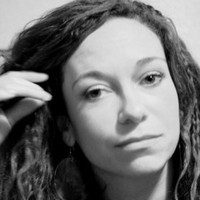An account is required to join the Society, renew annual memberships online, register for the Annual Meeting, and access the journals Practicing Anthropology and Human Organization
- Hello Guest!|Log In | Register
Commentary on Embodying Ethnographic Messages
August 1, 2019
Expressing Research Through Dance: Embodying Ethnographic Messages
Many can be the modalities of expressing what it is that we want to say. Why not that be the case for anthropological research? In my case it has been fear of rejection, of ridicule, of not been taken seriously, and so on. Truth is, however, that I know I am at my best when I fully enjoy myself and what I am doing, my experience, including the ways I deliver my message. At “my best” translates here into the highest level of performance given that I am in my happy place, into the most effective deliverance because my enthusiasm for what I am experiencing is palpable and contagious. And while I enjoy writing as a mean of articulating and interweaving ideas and experiences, often I let the parameters required by journals and publishers stiffen my process and take away from the immediacy and the passion of my message.
Other artistic expressions, perhaps because less utilized in mainstream anthropological circles, may help maintaining the vitality for the messages we want to share with the world, infusing our own work with renewed enthusiastic energy and captivating our audiences in less conventional manners. One of my favorite means of expression is dance, that I have enjoyed for years and I currently practice at least weekly among my amazing dance community in Portland, OR. But for an anthropologist of migration, humanitarianism, and anti-human trafficking, what does it mean to bring research at this level of performance? The translation for me is not literal; instead, I chose to embody what I consider the message that emerged through the complex process of undergoing ethnographic fieldwork, and subsequently analyzing and reflecting on data, theories and experiences. I will be delighted to show what this looks like for me in occasion of our gathering in 2020 in Albuquerque, NM.
Of course there are infinite ways to move writing into a different art form, through theatrical pieces, songs, films, photographs, paintings, installations, poetry, and any combinations of the above to any degree and involvement of the audience. It is pivotal, I feel, to maintain the art form as free as possible from preconceived notions of what exactly it should look like, to let that passion for our message to express itself authentically and uninhibited. The idea is less about showing how inventive and creative we are, and more about letting the essence of our—always co-created—message emerge undisturbed.
 Veronica Marconi, PhD candidate
Veronica Marconi, PhD candidate
Oregon State University

Cart
Search